 |
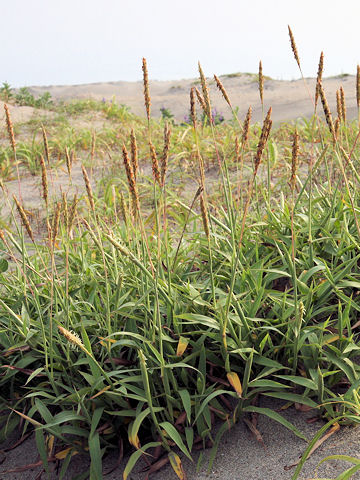

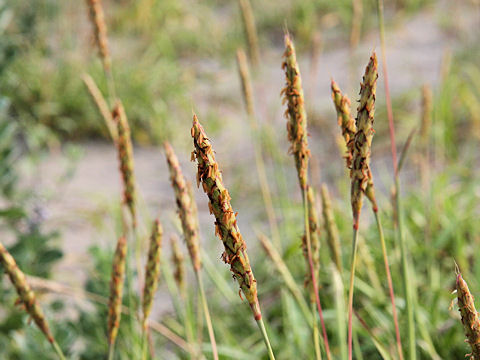

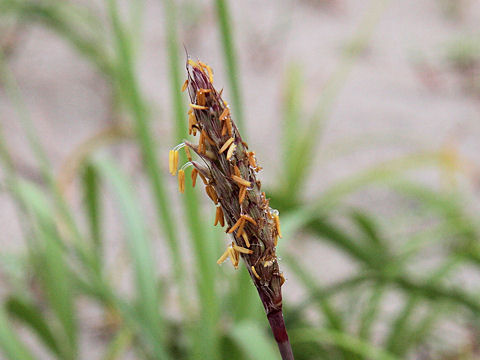

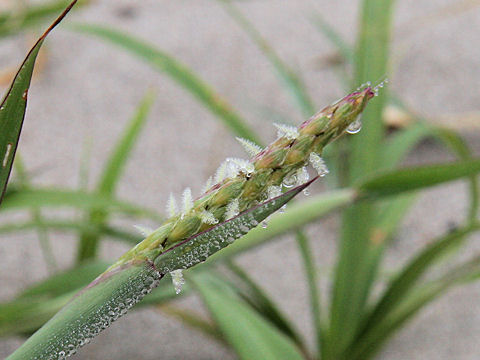

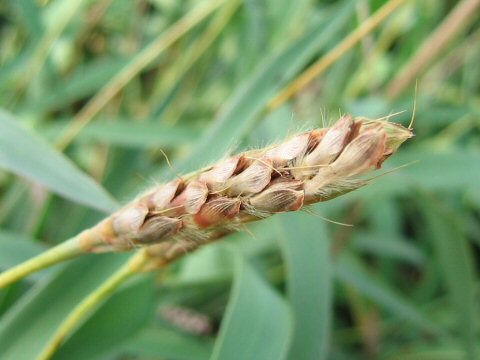

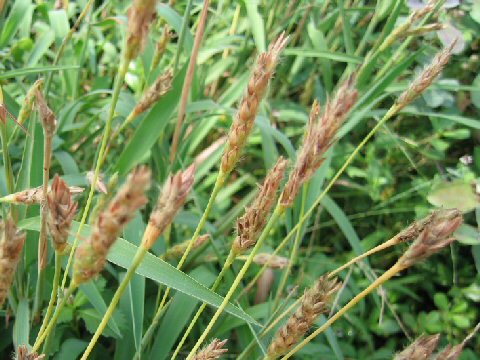

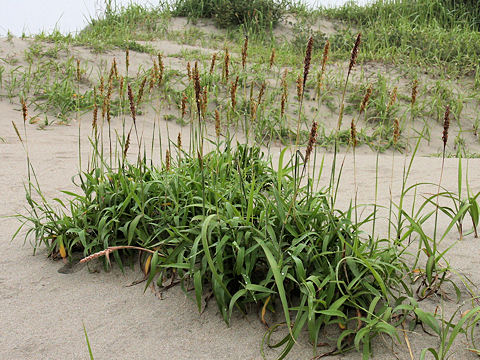

|

|
わが国の各地をはじめ、朝鮮半島や東アジアに分布しています。海岸の砂浜などに生え、群落を形成して高さは80センチほどになります。葉は線状披針形で互生します。葉や茎の節には白い短毛があります。7月から9月ごろ、桿の先に円柱状の花序をつけます。和名は、2片からなる花序が「かも(鴨)」の嘴に似ていることから。C4植物(C4型光合成を行う植物)です。
|

|
イネ科カモノハシ属の多年草で、学名は Ischaemum anthephoroides。英名はありません。
|

|
The "Ke-kamonohashi" (Ischaemum anthephoroides) belongs to Poaceae (the Grass family). It is a perennial herb that is native to Japan, the Korean Peninsula and East Asia. This herb grows in coastal sand beaches, form clumps and can reach about 80 cm in height. The leaves are linear-lanceolate and alternate. The leaves and stem nodes are covered with white short hairs. The columnar clusters are borne on the stem apices from July to September. The Japanese name is derived from the two-part inflorescence resembling the bill of a duck. It is a C4 plant (Plants with C4-type photosynthesis).
|

|
[上・中1] 茨城県神栖市柳川「波崎海岸」にて、2008年08月01日撮影。
[中2〜3・下] 同上にて、2008年07月17日撮影。
[中4・中5] 静岡県浜松市「浜名湖花博」にて、2004年09月19日撮影。
|








